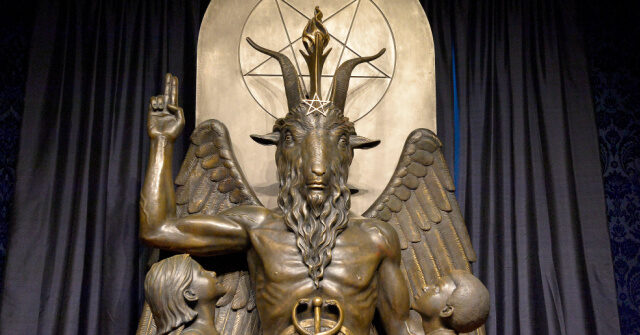A controversy surrounding the installation of a Baphomet statue by the Satanic Temple (TST) at the New Hampshire State House has culminated in its destruction, apparently due to vandalism. The statue, which stood in close proximity to a traditional Nativity scene, was unveiled on a Saturday and quickly became a focal point of discussion. Shortly after the unveiling, reports surfaced that the statue was toppled, leaving only the legs standing. Visual evidence confirmed this act of vandalism, showing the head and torso lying disfigured on the ground, alongside a cracked tablet that listed TST’s seven tenets, with several pieces of text missing. This incident has ignited a discussion about religious expression, representation, and societal values within a pluralistic framework.
In the wake of the destruction, the local police launched an investigation, indicating their belief that the vandalism occurred between Sunday morning and Monday afternoon. The incident raises questions about the safety and respect granted to symbols of differing belief systems in public spaces. Notably, State Representative Ellen Read, who championed the placement of the Baphomet statue alongside the Nativity scene, emphasized the importance of representing diverse religious perspectives in public displays. Despite her support for the TST, Read clarified that she is not an official member of the group but has shown interest in promoting their beliefs. Her engagement in the permitting process for the statue’s placement underscores her dedication to fostering a pluralistic society while advocating for the rights of different religious expressions.
Following the incident, the display, which had become a subject of significant debate, was promptly cleaned up and removed. Read defended the statue, asserting there was nothing inherently offensive about it. She addressed concerns that the display was intended to undermine or insult Christianity, arguing that it merely represented another facet of religious expression. Her perspective underscores the complexity of navigating a landscape where various belief systems coexist. Read asserted that if public spaces were to be exclusive in allowing religious displays, then no such representations should be permitted at all, promoting a dialogue around fairness in religious representation.
Concord Mayor Byron Champlin voiced skepticism about the motivations behind the statue’s placement, framing it as a politically charged statement rather than a genuine effort to foster religious equity. During a city meeting, he expressed his opposition to the display, suggesting that it served an anti-religious political agenda rather than a spirit of inclusivity. The mention of “legal extortion” highlights Champlin’s concerns over the potential consequences of denying the statue’s permit, which he viewed as a capitulation to threats rather than a commitment to genuine religious freedom.
In light of the vandalism and the broader implications it carries, Champlin proposed the formation of a committee to reassess how the city manages unattended public displays in the future. This step implies a recognition of the growing complexities in representing diverse ideologies in public spaces while addressing the potential for conflict among conflicting belief systems. It reflects a desire for a more thoughtful approach to what can be displayed and how different groups can participate in public religious expression without infringing on or dismissing one another’s beliefs.
The destruction of the Baphomet statue highlights the ongoing tensions surrounding religious representation in public spaces and raises questions about how society confronts the challenges posed by pluralism. As communities navigate these delicate issues, the necessity for dialogue and understanding becomes increasingly crucial. Balancing the representation of varied beliefs while cultivating an environment that respects all religious expressions remains an ongoing challenge, underscoring the need for continued conversation about the nature of community, belief, and the role of public representation in a diverse society.

